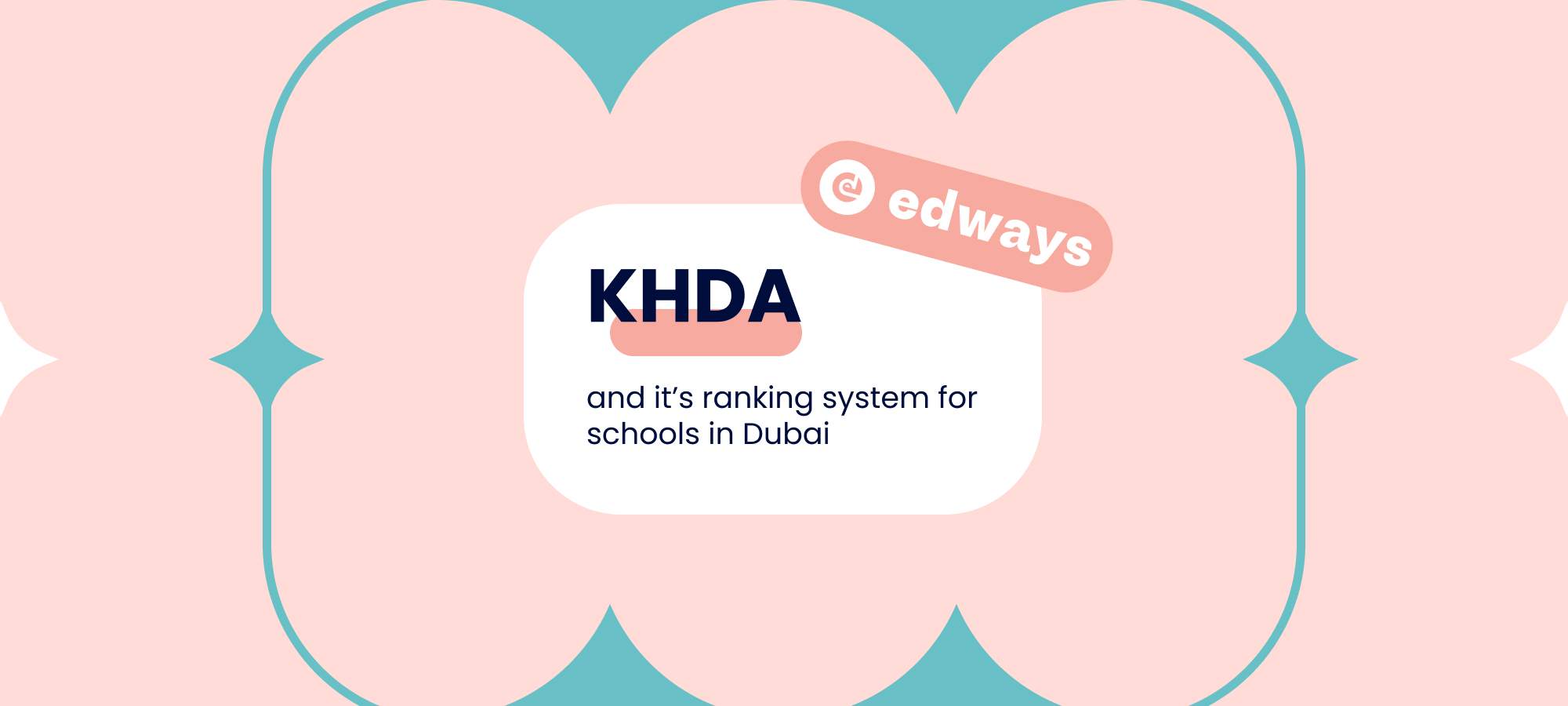The KHDA and it’s ranking system
The Knowledge and Human Development Authority (KHDA) is an educational regulatory authority in Dubai, United Arab Emirates (UAE). The KHDA is responsible for regulating and overseeing the private education sector in Dubai, including schools, universities, and training institutes.
The KHDA was established in 2006 as a government agency with the mandate to improve the quality of education in Dubai and to ensure that all students have access to high-quality education. The KHDA works closely with schools, universities, and other educational institutions in Dubai to support their development and improvement, and it sets standards and guidelines for the provision of education in the city.
The KHDA is also responsible for conducting inspections and assessments of educational institutions in Dubai, and it publishes annual reports that provide information on the performance and quality of education in the city. These reports are used by parents, students, and other stakeholders to evaluate the performance of schools and universities in Dubai.
The KHDA's inspection criteria are based on the Dubai School Inspection Bureau (DSIB) framework, which is designed to assess schools on a range of factors that are considered to be important for providing high-quality education. These factors include students' achievement and progress, the quality of teaching and learning, the school's curriculum and resources, the leadership and management of the school, and the school's environment and safety.
The KHDA uses a five-point rating scale to evaluate schools, with the categories being "Outstanding," "Very Good," "Good," "Acceptable," and "Unsatisfactory." Schools that receive an "Outstanding" or "Very Good" rating are considered to be high-performing and are meeting the highest standards of quality and excellence. Schools that receive a "Good" rating are considered to be meeting the minimum standards for providing a good quality education, while schools that receive an "Acceptable" rating are considered to be in need of improvement. Schools that receive an "Unsatisfactory" rating are considered to be failing to meet the minimum standards for providing a good quality education and may be subject to further action by the KHDA.
The DSIB framework has six main categories, which are used to evaluate schools on different aspects of their performance and quality. These categories are:
- Students' achievement and progress: This category assesses schools on the extent to which their students are achieving their learning goals and making progress in their studies. This includes factors such as students' test scores, their performance on external examinations, and their progress over time.
- The quality of teaching and learning: This category assesses schools on the quality of the teaching and learning that takes place in the classroom. This includes factors such as the effectiveness of teaching methods, the use of assessment to support learning, and the availability of resources and support for students.
- The curriculum and resources: This category assesses schools on the quality and relevance of their curriculum, as well as the availability and suitability of the resources and facilities that are used to support learning. This includes factors such as the alignment of the curriculum with the school's goals and the availability of technology and other resources to support teaching and learning.
- The leadership and management of the school: This category assesses schools on the effectiveness of their leadership and management, including factors such as the school's vision and mission, the effectiveness of communication and collaboration within the school, and the availability of support and resources for teachers and staff.
- The school's environment and safety: This category assesses schools on the quality and safety of their physical environment, including factors such as the condition and maintenance of the school's buildings and facilities, and the availability of appropriate resources and support to ensure the safety of students
The DSIB framework is based on an inspection system methodology, which consists of three major stages: self-evaluation, review and verification.
In the Self-Evaluation stage, each school carries out its own self-assessment against the various performance items listed in the DSIB framework. Schools are expected to evidence their capacity to meet each performance criteria through data and documents. The self-evaluation process should involve all stakeholders – administrators, teachers, parents and students.
In the Review stage, DSIB inspectors carry out formal external evaluation to verify the self-evaluation results. The evaluation process use evidence-based rating scales and interviews with key stakeholders. Through this process, strengths, weaknesses and areas for improvement are identified.
In the Verification stage, DSIB inspectors determine the final judgement of a school's performance by assessing the school against the performance criteria set out in the DSIB framework. Each criterion is rated on a five-point scale with 0 being unsatisfactory and 4 being outstanding.
Finally, the DSIB Inspection Team produces a Detailed Audit Report that outlines the school's overall performance. The report is made available to stakeholders including parents, students, teachers and school administrators. The aim of the report is to create an informed platform for dialogue about the school’s performance and to enable informed decisions about improvement and development.
Overall, the KHDA uses a range of criteria and standards to evaluate and rate schools in Dubai, and its annual inspection reports provide valuable information to parents, students, and other stakeholders about the performance and quality of education in the city.

